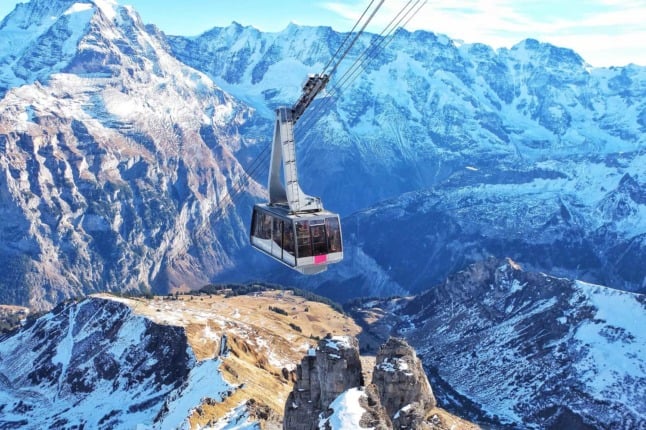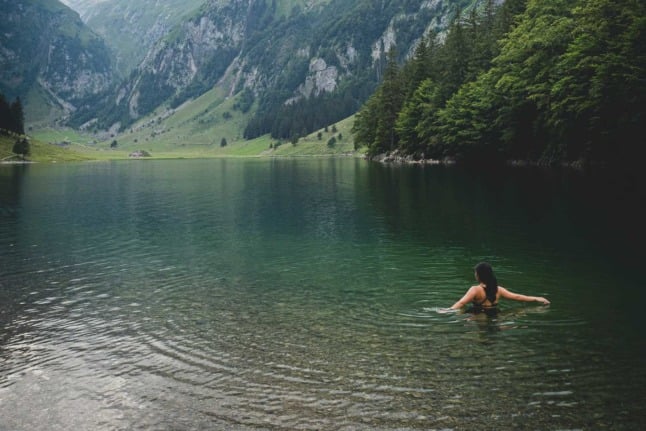Ask most Swiss and they’ll tell you the same thing. “Switzerland is only expensive for people who don’t live here”.
The comment refers to the idea that the high costs of living in Switzerland are offset by the high wages.
Whether that’s true or not – and plenty of people living in Switzerland would disagree – it doesn’t of course help tourists, visitors and anyone else who finds themselves in Switzerland for a period of time but cannot benefit from earning those sweet Swiss francs.
Despite this – and of course we’re biased – we still think that Switzerland is definitely worth a visit.
So here it is, a guide on how to save money while travelling through Switzerland.
Public transport is cheaper – and often a better way to see the sights
For visitors from the US, Australia and plenty of other countries, the first instinct is often to rent a car while on holiday.
While that can be easier – especially with kids – it will end up more expensive and will often deprive you of the best sights.
In cities, public transport is actually quite reasonable – and will save you the inevitable stress of parking.
READ MORE: What is actually ‘cheap’ in Switzerland?
In Zurich, a 24-hour ticket starts at CHF5.40, in Basel it will cost CHF9.90 while in Geneva it’ll set you back CHF10.
In Bern, you will get a free public transport ticket for your entire stay with your tourist accommodation, which includes “the famous Gurten funicular, the funicular Marzilibahn, and the elevator to the Minster terrace, as well as travel to and from Bern Airport.”
In fact, many of Switzerland’s stunning gondolas, funiculars and cableways are counted as public transport, meaning they’re a great way to see some spectacular sights on the cheap.
Many other towns and villages have similar cards, so be sure to do your research before you go.
When travelling further afield, tickets on public transport through the mountains are also surprisingly reasonable.
The Swiss Travel Pass gives you unlimited travel by train bus and boat for three days for CHF232.
Better yet, the three days are out of a total of 15 days, so you don’t need to take them consecutively.
You’ll also get free admission to museums and a range of mountain excursions, as well as a range of other discounts and bonuses.

Eating and drinking
For travellers, the cost of eating – and especially drinking – can be off putting.
While there’s no doubt that Swiss cuisine is almost universally expensive, there are ways around it for the budget conscious.
Lunch is much cheaper than dinner in many restaurants in Switzerland, even for the same food.
News site Swiss Info found Bern restaurant Meridiano serves a two and three-course meal at lunch which costs CHF36 and CHF43 respectively, but which climbs to a whopping CHF120 at dinner time.
Swiss supermarkets in particular are relatively cheap and have top quality produce. Most of the major chains also have pre-packed meals which are perfect if you’re on the go.
If you’re feeling thirsty, keep in mind that the water from Swiss taps is delicious and full of minerals – and of course free.
For alcohol, supermarkets are also your best bet – other than of course Migros who don’t sell alcoholic drinks or tobacco products.
READ MORE: Is Swiss supermarket Migros about to start selling alcohol and cigarettes?
Drinking in public is legal in Switzerland, meaning that a picnic in the park with a few bottles of wine will be no problem.
Swimming
Anyone suggesting swimming in rivers in New York, London, Dublin or plenty of other larger cities might get locked up, but in Switzerland it’s very common to swim in the waterways that run through most major cities.

In fact, swimming is often a common way to get to work.
The best news for the budget conscious – other than the fact you won’t emerge covered in radioactive goo unlike in other cities – is that it’s free.
Cost of living in Switzerland: How to save money if you live in Zurich
In addition to lakes and rivers, some Swiss cities also have summer baths, known as ‘Badis’.
These give you the chance to swim in the same water but will have facilities like changing rooms and toilets.
You might have to pay for the privilege – most Badis cost somewhere between CHF5 and CHF10 – but its well worth it, with some offering family discounts.
Hiking
It’s a cliche bandied about by many a Swiss tourism authority, but many of the best things in Switzerland are actually free.
While having a night on the beers should be kept for Germany, a night on the wines should be done in France and a day on the espresso should purely be an Italian affair, hiking in Switzerland is absolutely stunning and is of course free.

Unlike swimming, it is also an all year round activity – with many of the sights equally spectacular on a beautiful summer’s day as they are when covered in snow.
READ MORE: Five quiet places to escape the bustle of Geneva
Reading
OK so some of you might want to skip over this one – why do something on holiday that you can do for free at home? – but reading while on holiday can be a great way to relax.
It’s also a good way to soak up the local culture, depending of course on what you’re reading.
Better yet, it is also free.
Switzerland’s multilingual culture and high proportion of English-speaking residents means that the libraries are actually quite well stocked when it comes to English books.
Unless you want to check the book out, you don’t need a library card – you can just walk on in and start reading.
In the warmer months, some libraries set up mobile book stations in the park, meaning that you can enjoy the nice weather with a book while being content that your wallet isn’t getting lighter.
Day trips and offers
The SBB (Swiss Federal Railways) offers a number of day trips and specific offers at heavily discounted prices. This often includes family prices.
In addition to discounted fares for the day trip, you’ll also get discounted entry to museums and other cultural venues.
They are usually sold as a package.
EXPLAINED: How to find cheap train tickets in Switzerland
These vary and might not be exactly what you had planned on – i.e. you might need to alter your travel plans somewhat – but they cover some of the best experiences on offer in Switzerland.
Obviously this is particularly good for tourists rather than work commuters, but in addition to the savings they can sometimes highlight a fun or interesting experience that you might have otherwise missed.



 Please whitelist us to continue reading.
Please whitelist us to continue reading.
Member comments